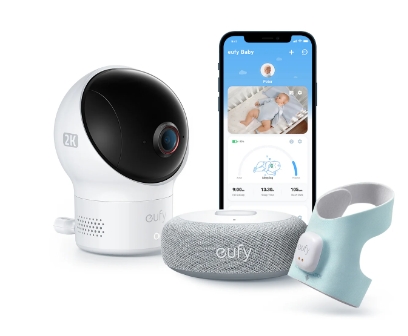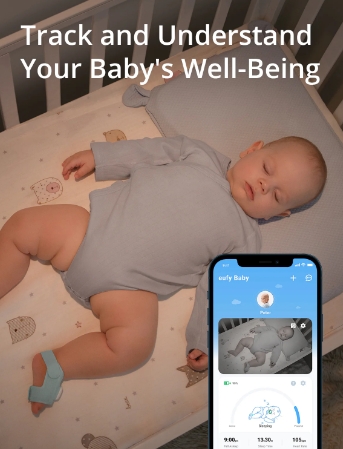Baby monitors have become essential tools for modern parents, providing a crucial layer of safety and peace of mind. These devices not only help monitor a child's well-being but also allow parents to manage their daily tasks with confidence, knowing they can keep an eye on their little ones from a distance. With so many options available, finding the best baby monitor for a family’s specific needs is key to ensuring both safety and convenience. This article aims to outline the essential features parents should consider when selecting a baby monitor, helping them choose the best option for their unique parenting journey.

Key Features to Look for in a Baby Monitor
Audio and Video Quality
Clear audio and high-definition video quality are paramount for effective monitoring. Parents should look for baby monitors that offer both. High-definition video capabilities provide a sharp and detailed view of the baby, making it easier to observe even the smallest movements or changes in behavior. Night vision is another critical feature, allowing parents to monitor their baby in low-light conditions without disturbing their sleep. This is particularly important during nighttime feedings or if the baby is sleeping during the day. Additionally, monitors with zoom capabilities can enhance surveillance, providing a closer look at the baby or the surrounding environment when needed. For instance, parents can zoom in to ensure that their baby is comfortably tucked in or check if they have dropped their favorite toy.

Range and Connectivity
The range of a baby monitor plays a vital role in its effectiveness. Parents need to ensure that they can monitor their baby from various rooms in the house without interruption. Traditional monitors may have limited ranges, while Wi-Fi-enabled monitors offer more flexibility, allowing for monitoring over greater distances. It is essential to assess the connectivity options of the chosen monitor to determine if it will meet the family's specific needs. A strong and stable connection is crucial for uninterrupted monitoring and peace of mind. Wi-Fi-enabled monitors also allow parents to monitor their babies through their smartphones, providing additional flexibility.
Two-Way Communication
Two-way audio functionality allows parents to communicate with their baby without needing to be in the same room. This feature can be incredibly comforting for both the parent and the child. For instance, if a baby wakes up and becomes distressed, a parent can soothe them with their voice, helping to calm them down. This interactive capability can enhance the connection between parent and child, promoting a sense of security for the baby. Moreover, some monitors also include additional features such as lullabies or white noise, which parents can activate remotely to help soothe their babies back to sleep. This feature provides an extra layer of support, especially during those challenging nighttime wake-ups.
Smart Features and App Connectivity
The emergence of smart baby monitors has revolutionized the way parents monitor their children. These devices often come with additional features such as temperature sensors, humidity alerts, and customizable notifications. Such capabilities allow parents to maintain a close watch on their baby's environment, ensuring it remains safe and comfortable. A noteworthy option is the eufy Smart Sock S340, which stands out for its ability to continuously monitor vital signs such as heart rate and blood oxygen levels. This product not only provides real-time data but also offers customizable alerts, allowing parents to receive notifications directly on their smartphones when it detects any changes.
Battery Life and Power Options
Long battery life is a crucial feature to consider, especially for portable monitors. A reliable baby monitor should ideally have a battery life that lasts throughout the day and night without requiring constant recharging. Additionally, flexible power options, such as rechargeable batteries and plug-in capabilities, provide convenience and ensure uninterrupted monitoring. Parents should also consider how easy it is to charge and maintain the monitor's power source. For instance, monitors that have an easily accessible charging port or come with multiple charging options can save time and hassle, especially during those busy parenting days.
Safety and Privacy Features
In an age where privacy is paramount, ensuring that baby monitors are secure is essential. Wi-Fi-enabled monitors should incorporate encryption and secure connections to protect against unauthorized access. Parents should look for monitors that prioritize safety features, safeguarding their family's privacy while providing peace of mind during monitoring. It is also wise to check for user reviews regarding the security features of a baby monitor. Features such as two-step verification for app access and notifications for suspicious activity can add an extra layer of protection. Additionally, parents should be mindful of any firmware updates or patches from the manufacturer that improve security.
Alerts and Notifications
Effective baby monitors come equipped with alert systems that notify parents of unusual sounds, movements, or environmental changes. For instance, a monitor may alert parents if the baby cries or if there is a significant change in room temperature. Moreover, some advanced monitors can differentiate between various sounds, sending specific alerts for different situations. For example, a monitor may notify parents of a cry versus background noise, allowing them to respond accordingly. This feature helps parents prioritize their actions, ensuring they address the most pressing needs first.
Portability and Design
For many parents, portability is a significant factor in choosing a baby monitor. Lightweight and compact designs make it easy to move monitors around the house or even take them on trips. A portable monitor can be a great asset for families who travel frequently or have multiple rooms to monitor. When selecting a monitor, parents should consider how easy it is to transport and set up in various locations. Additionally, the design should also be aesthetically pleasing and fit seamlessly into home decor. Parents often appreciate monitors that blend in with their home environment rather than standing out as an eyesore.
Ease of Use and Setup
User-friendly interfaces and straightforward installation processes are essential for busy parents. A baby monitor should be easy to operate, allowing parents to focus on their little one rather than struggling with complicated technology. Choosing a monitor with a simple setup can save time and frustration, ensuring that parents can start monitoring their baby right away. Look for monitors with intuitive apps that are easy to navigate and set up. Features such as guided installation processes and clear instruction manuals can also enhance the user experience.
Conclusion
In summary, selecting the right baby monitor involves understanding the key features that enhance monitoring effectiveness and contribute to parental peace of mind. Essential features such as audio and video quality, range, two-way communication, smart connectivity, battery life, safety, and alert systems should all be prioritized based on individual needs. By considering these factors, parents can choose a baby monitor that aligns with their lifestyle and offers the reassurance they desire.